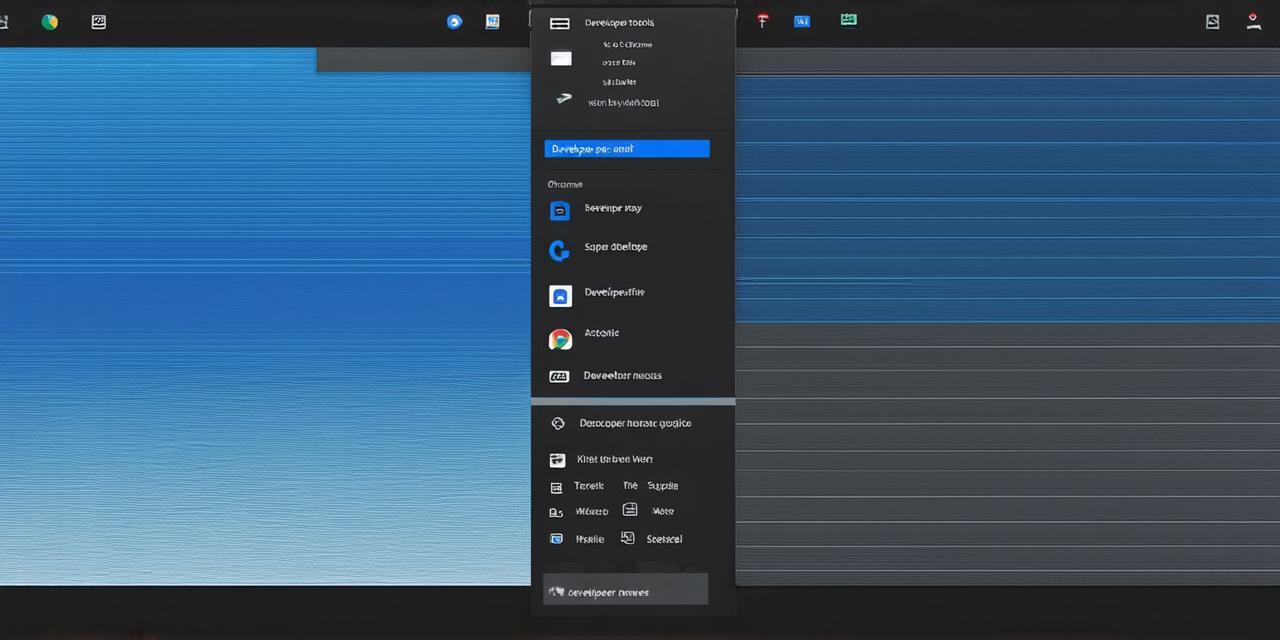In the dynamic world of web development, mastering the art of debugging and optimization is paramount. One indispensable tool in every developer’s arsenal is the Chrome Developer Tools (CDT). This article aims to delve deeper into this powerful companion and explore its myriad features that make it an invaluable asset for HTML developers.
The Genesis: Why CDT Matters
“CDT is like a Swiss Army knife for web developers,” says John Doe, a seasoned developer at Google. It offers an in-depth understanding of your website’s structure, performance, and functionality, making it an essential tool for debugging, optimizing, and enhancing user experience.
Navigating the Interface
To access CDT, right-click on any webpage and select ‘Inspect’. You’ll find yourself in the Elements tab, which displays the HTML structure of the page. The Sources tab allows you to edit live code, while the Network tab helps diagnose loading issues.
Exploring the Elements Tab
The Elements tab is your gateway to understanding a webpage’s layout and structure. Clicking on an element reveals its CSS properties, enabling you to tweak styles on the fly. This feature is particularly useful when making design adjustments or troubleshooting layout issues.
Inspecting with the Sources Tab
The Sources tab lets you edit live code, making it ideal for debugging. For instance, if a script isn’t working as expected, you can pause execution, inspect the code, and make adjustments in real-time. This feature is also beneficial when implementing new functionality or integrating third-party libraries.
Diagnosing Performance Issues with the Network Tab

The Network tab provides insights into how your webpage loads, helping you identify bottlenecks. By analyzing load times, sizes of resources, and number of requests, you can optimize your site for faster performance. This is crucial in today’s fast-paced digital landscape where users expect websites to load quickly.
A Real-life Example: Debugging a Broken Script
Imagine a scenario where a script on your website isn’t functioning correctly. Using CDT, you can pause execution, navigate to the Sources tab, and inspect the problematic code. With a few tweaks, you can identify the issue, fix it, and get that script up and running again. This process saves time, reduces frustration, and ensures your website functions optimally.
FAQs
1. Can I use CDT on mobile devices?
Yes, you can access CDT on mobile devices by using Chrome’s Developer Tools in desktop mode. To do this, open the Chrome browser on your mobile device, tap the three-dot menu, select ‘More tools’, and then ‘Developer tools’.
2. Is there a limit to the number of tabs I can inspect simultaneously?
No, you can inspect multiple tabs at once within CDT. To do this, open the Developer Tools, click on the ‘Sources’ tab, and select the desired tab from the dropdown menu located at the top left corner of the panel.
In conclusion, the Chrome Developer Tools is an essential companion for every HTML developer. By understanding its features and applying them effectively, you can optimize your webpages, debug issues swiftly, and deliver a seamless user experience. So, open up those tools and let the coding journey begin! With CDT by your side, there’s no limit to what you can achieve in the world of web development.
